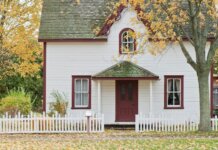Home builders ramped-up production in October, as housing starts, building permits and housing completions all increased on a month-over-month and year-over-year basis.
Housing starts jumped to a seasonally adjusted annual rate of 1.314 million, an increase of 3.8% compared with 1.266 million in September and up 8.5% compared with 1.211 million in October 2018, according to the U.S. Census Bureau and U.S. Department of Housing and Urban Development.
Starts of single‐family homes were at a rate of 936,000, an increase of 2.0% compared with about 918,000 in September.
Starts of multifamily properties (five units or more per building) were at a rate of 362,000, an increase of 6.8% compared with 339,000 in September.
Regionally, and on a year-to-date basis, combined single-family and multifamily starts in October were up 6.8% in the South, but were down 0.5% in the Northeast, 7.4% in the Midwest and 10.3% in the West.
Building permits increased to a seasonally adjusted annual rate of 1.461 million, an increase of 5.0% compared with 1.391 million in September and up 14.1% compared with 1.281 million in October 2018.
Permits for single‐family homes were at a rate of 909,000, an increase of 3.2% compared with 881,000 the previous month.
Permits for multifamily properties were at a rate of 505,000, an increase of 6.1% compared with 476,000 in September.
Regionally, and year-over-year, permits increased 9.2% in the Northeast and 5.2% in the South. However, permits were down 5.0% in the Midwest and 1.4% in the West.
Housing completions were at a seasonally adjusted annual rate of 1.256 million, up 10.3% compared with 1.139 million the previous month and up 12.4% compared with 1.117 million in October of last year.
Completions of single‐family homes were at a rate of 897,000, an increase of 4.5% compared with 858,000 in September.
Completions of multifamily dwellings was at a rate of 354,000, an increase of 27.3% compared with 278,000 in September.
“Home builders are seeing more building opportunities as market conditions remain solid,” says Greg Ugalde, chairman of the National Association of Home Builders (NAHB), in a statement. “Builder sentiment remains strong and we are seeing an uptick in buyer traffic.”
“Led by lower mortgage rates, the pace of single-family permits has been increasing since April, and the rate of single-family starts has grown since May,” adds Robert Dietz, chief economist for NAHB. “Solid wage growth, healthy employment gains and an increase in household formations are also contributing to the steady rise in home production.”
Mark Fleming, chief economist for First American, says the increased production comes as demand for new housing is rising.
“Low mortgage rates, rising household income and a surge in household formation among millennials have significantly boosted demand for housing over the past year,” Fleming says in a statement. “However, we have under-built new housing relative to demand for years. Building will have to exceed household formation for a number of years to reduce the housing stock ‘debt’ we have accumulated.”
Despite the fact that there is catching up to do, Fleming says it is “a good sign that home building is beginning to accelerate to keep up with the pace of household formation.”
“Even better news is the rate of single-family permits,” Fleming says. “At 909,000, it is the highest it’s been since August 2007, signaling the expected strength of demand in 2020.”
Fleming adds that “conditions are ripe for new construction to accelerate.”
“With low mortgage rates and increasing household income, demand is strong,” he says. “If you build it, they will buy it, and builders are taking heart.”
Bill Banfield, executive vice president of capital markets for Quicken Loans, says “the continued growth in single-family home building, and permits for future construction, should make consumers who are considering buying confident that they will have a solid choice of homes.”
“This is an important report for future homebuyers since one of the largest deterrents to entering the market right now is the lack of robust housing options,” Banfield adds.












